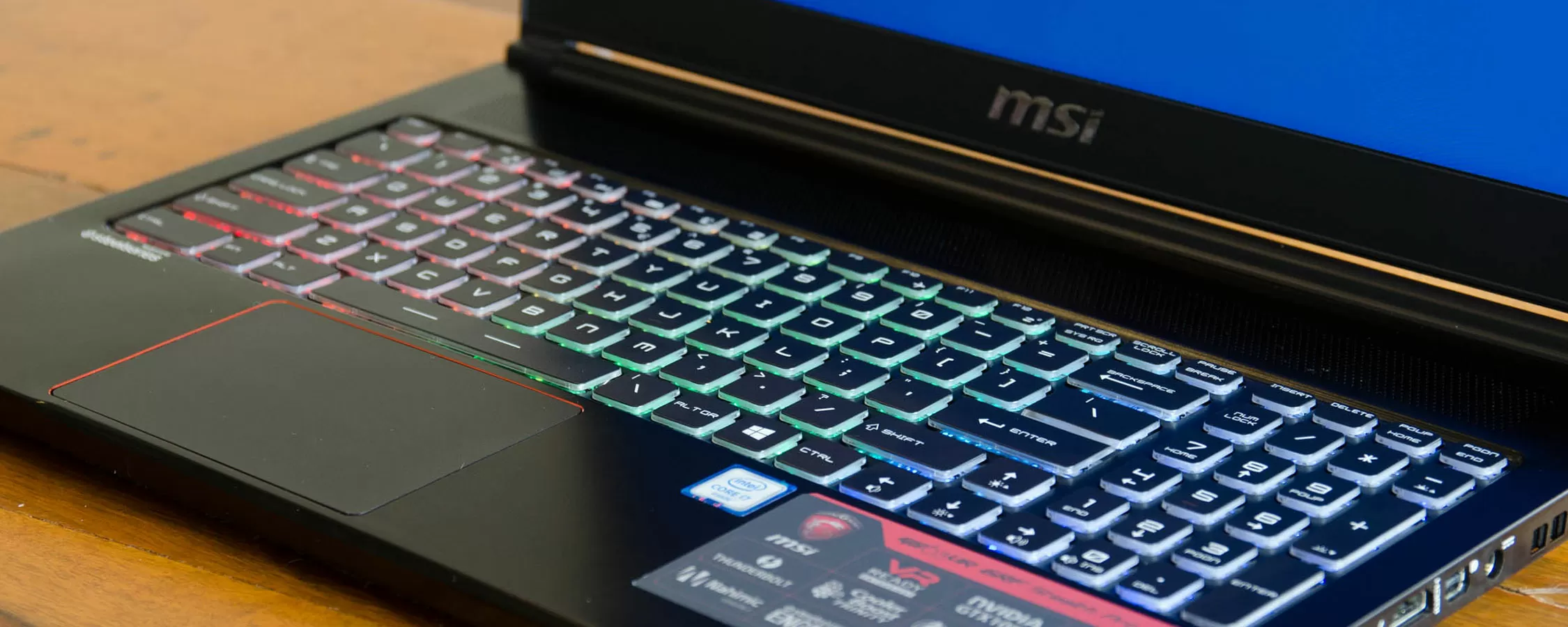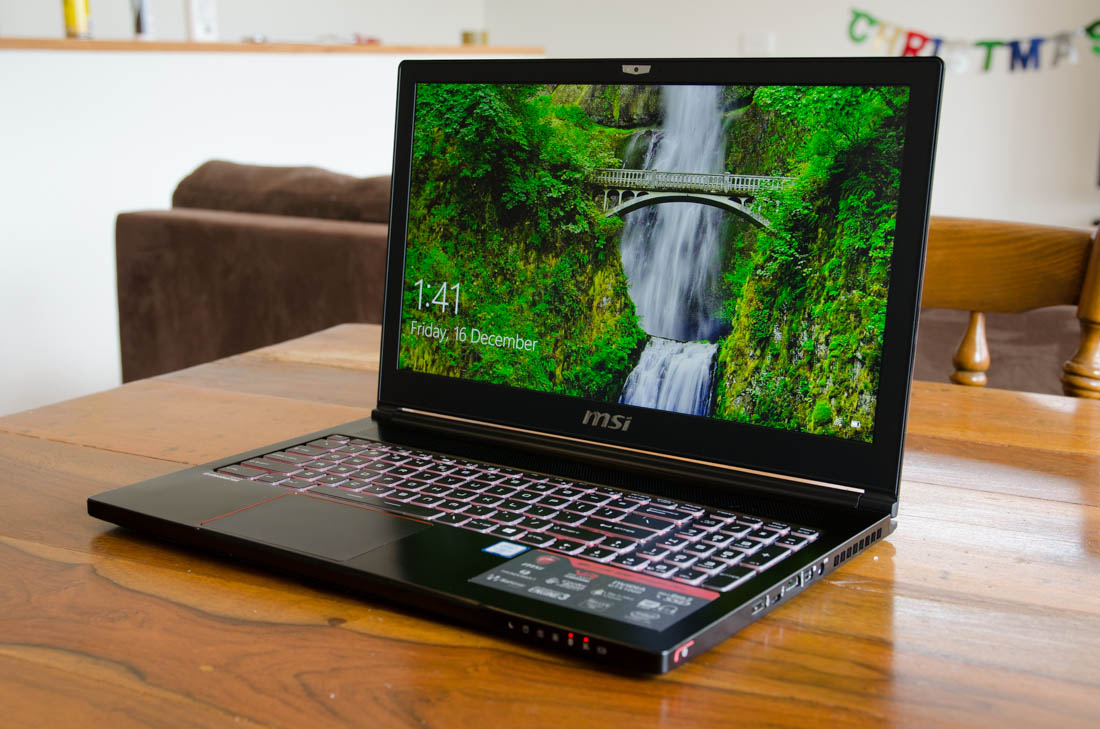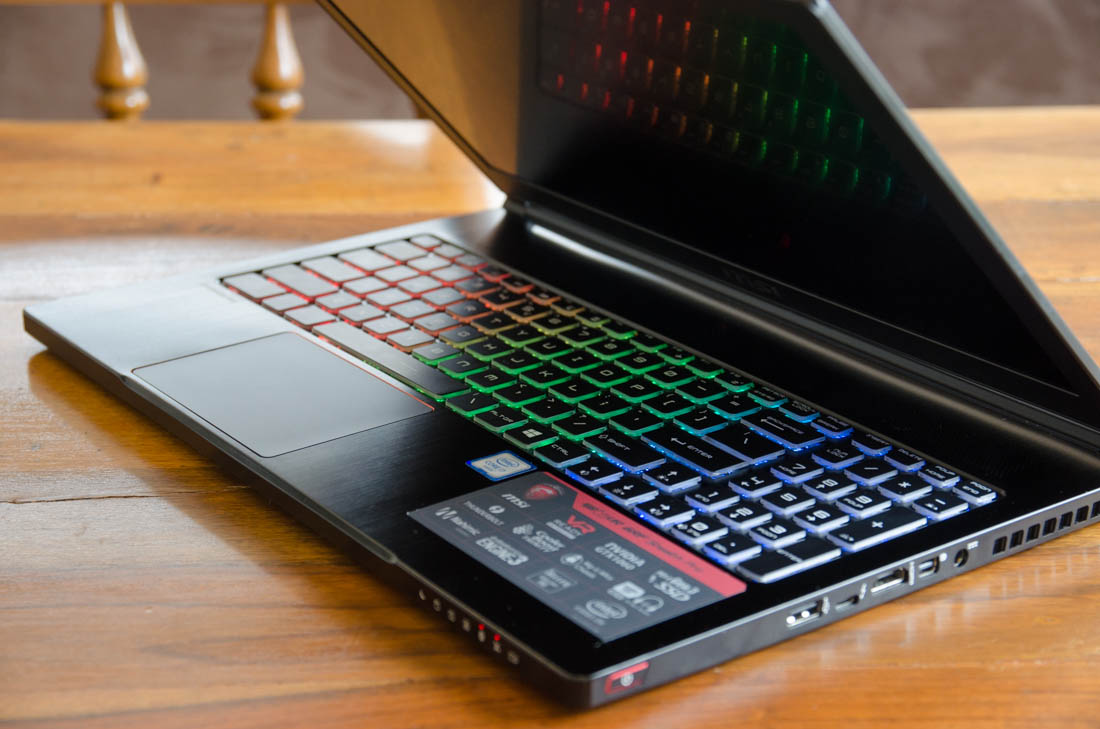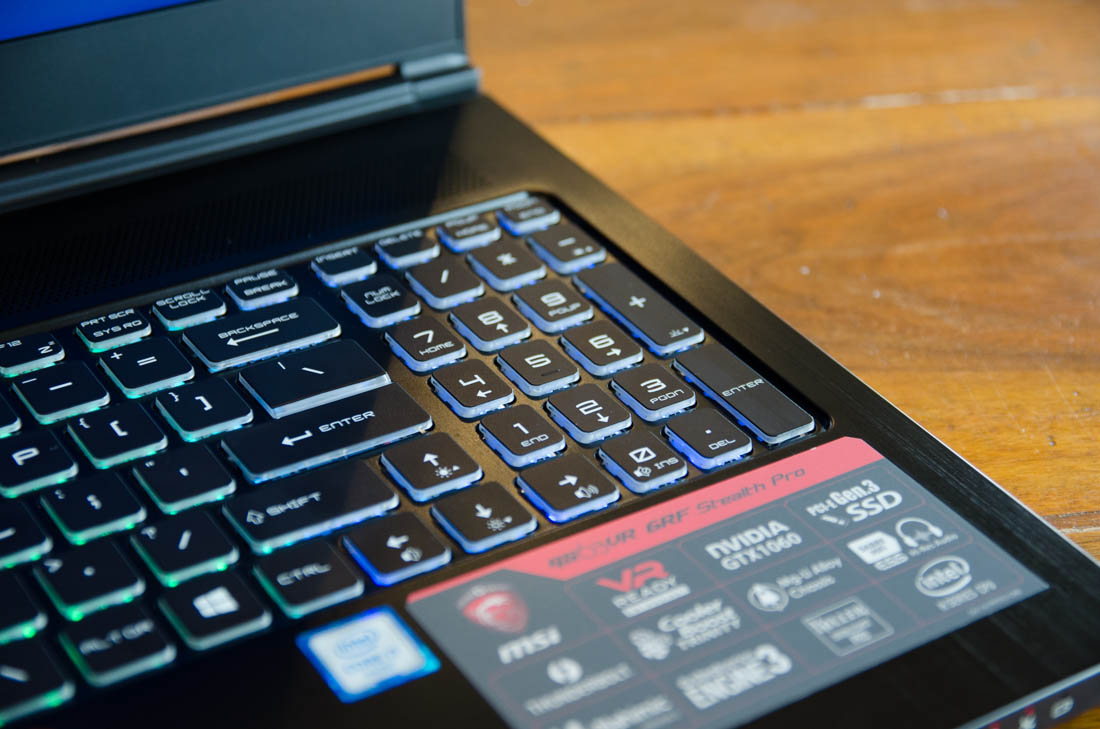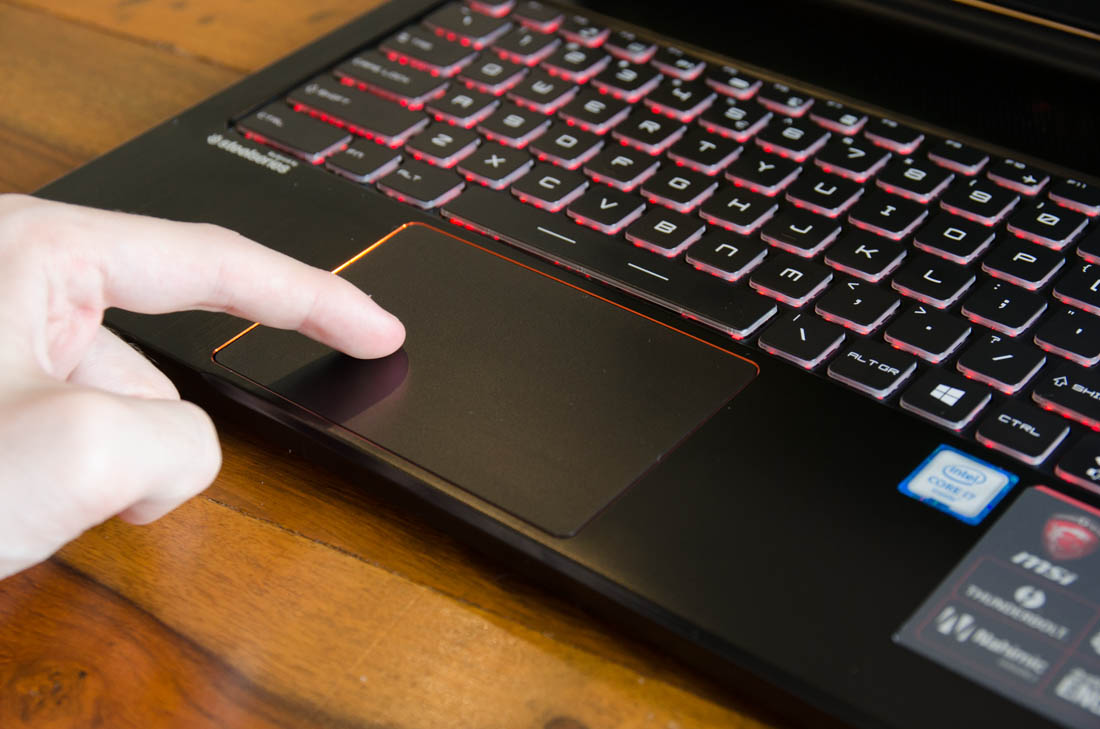Display, Keyboard and Trackpad
MSI has used a 15.6-inch "IPS-level" LCD with a resolution of 1920 x 1080, giving this laptop a display pixel density of 141 PPI. This resolution is typical for a gaming laptop of this size, and is well suited to the performance of the GTX 1060. There is also a 4K IPS option available with the top end $1,899 model.
Displays on gaming laptops are rarely fantastic, and the GS63VR is no exception. The IPS-level (whatever that means) panel delivers good viewing angles, however brightness is limited to just 271 nits; normally I'd like to see at least 300 nits. Black levels aren't great either, leading to a contrast ratio of just 871:1, which isn't unusual for an entry-level IPS display but still disappointing nonetheless.
Color performance from MSI laptops is generally okay, particularly as they are configured to use an sRGB mode by default. The display on my review unit had a slight blue tint, but greyscale accuracy was a respectable dE2000 value of 2.58 (less than 2.0 is considered very good), while color accuracy was also decent enough at a dE2000 of 3.39. This leads to a generally decent color experience with good, though not outstanding levels of vibrance and accuracy.
Display calibration via SpectraCal's CALMAN 5 software can resolve lingering issues with greyscale accuracy, pushing the display below a dE2000 value of 0.5. Color performance was more tricky to correct, and I only managed to achieve a slight increase in accuracy.
Perhaps the most disappointing aspect of the GS63VR's display is a lack of G-Sync or refresh rates higher than 60 Hz. The included 1080p display is bog average and this is the case across MSI's 15.6-inch laptop line. Asus, on the other hand, is an example of a company that offers a 15.6-inch 1080p G-Sync panel in their cheaper GTX 1060 laptops, so ideally I'd have liked to see G-Sync in this laptop as well.
The SteelSeries keyboard included with the GS63VR is decent for a laptop that doesn't have a ton of space for a keyboard with deep travel distance. In terms of travel distance, this keyboard falls between a larger gaming laptop like the Alienware 15, and an ultrabook. MSI has used chiclet keys, which are fine for gaming, and the tactile feel of each key is surprisingly clicky considering the use of rubber dome keycaps; it's not as mushy as some other gaming laptop keyboards I've recently tested.
The keyboard layout is good, with adequate size for important gaming keys like tab, left shift, control and the spacebar. There are full-sized arrow keys awkwardly crammed between the standard keyboard and the numpad, although I appreciate the inclusion of a numpad on a laptop that clearly has enough space to include one. System functions such as volume adjust, brightness adjust, airplane mode and so forth are mapped to both the F-keys and the arrow keys, and there's a good mix of inclusions here.
The GS63VR's keyboard is backlit via three-zone RGB LEDs. In MSI's software utility you can change the color of each of the three zones, and there is additional functionality to pulse the backlight in various patterns. The rainbow effect you can achieve here looks cool, though it should be noted that each individual key is not RGB-programmable. If you'd prefer a solid backlight color, red looks best so it matches the physical red highlights of this laptop.
MSI has opted for a garbage ELAN touchpad, which provides a mediocre tracking and gesture recognition. I had to turn up the sensitivity to almost the maximum to achieve a responsive experience on this trackpad, and even then it just feels... janky. Not that this surprised me: ELAN hardware is terrible and it's no wonder that only a small handful of gaming laptop manufacturers still use their products.
Luckily most gamers will be using an external mouse, so the trackpad is of little concern, but I would have liked to see a better trackpad for the times you're using this laptop as a portable work machine.
